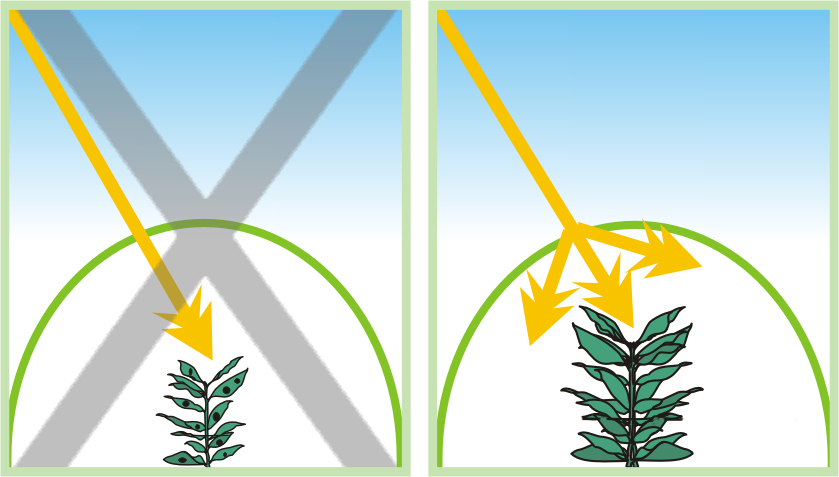Interesting analogy. I quite like it. The reason a diffuser eliminates shadows is because it makes the light source bigger in relation to the subject. If you move the diffuser further you get more shadows, because you're making the light source smaller. If you placed smaller light sources further away in an array matching the apparent size of the duffuser, you would get similar reduction in shadows. Since you are now further away from the subject you need to increase power because on the inverse square law. What also happens is that the relative distance between the nearest and farthest points of the subject decreases in relation to the light source.
Tl;dr: for a scrog a light source near the tops will light all the buds just fine, but doing the same on trees would not light the lowers. For trees you want the light source further away, but for a scrog the required increase in power would be wasted.
Diffusers break up the light and deflect it at different angles. Shadows are eliminated not just by making the light source "bigger" but by bouncing it off walls, the roof and other objects in the room. That is the secret to penetration: creating multiple angles of light that can shine or bounce under the foliage to penetrate the lower canopy.
In your example, if we took that same light over the "tree", split it into four lights 1/4 the strength each and shone those lights from each corner of the grow area, more light would penetrate, as there would be more photons passing through the canopy at different angles increasing their chances of passing through the gaps.
If I am holding an umbrella and you drop a bucket of water on me from directly above, I wont get wet. But if I walk outside where it is raining and the wind is pushing the rain sideways as it falls, some of that rain will be pushed under the umbrella and wet me.
The Inverse Square Law turns to shit when you multiply the light sources instead of applying it to a single light source, because multiple light sources can overlap each other.
The plant in the middle gets the least penetration because its canopy shadows the undergrowth. The plants on either end get the most penetration, because the light passes under the top canopy into the lower foliage. Now imagine having one light over each plant: they would all get good penetration due to the different angles from mulyiple light sources passing under the top canopy into the foliage below.
Does that make sense now?














